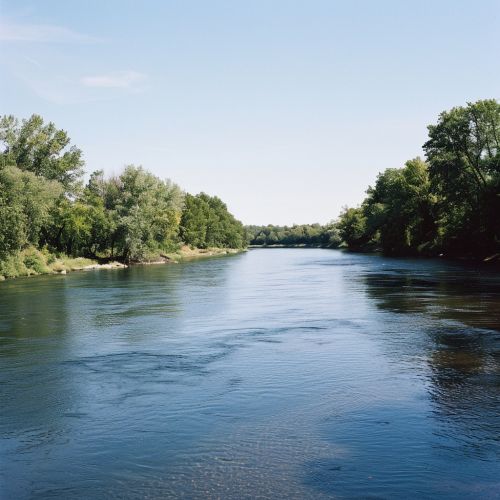Delaware River
Geography
The Delaware River is a major river on the Atlantic coast of the United States. It drains an area of 14,119 square miles in five U.S. states: Delaware, Maryland, New Jersey, New York, and Pennsylvania. The river's watershed encompasses 42 counties and 838 municipalities, home to nearly 8 million people across four U.S. states. The river's source is in the Catskill Mountains in New York, and it empties into the Delaware Bay, which then flows into the Atlantic Ocean.


History
The Delaware River has played a significant role in the history of the United States. It was an important route for migration and settlement of the eastern United States in the 18th century. During the American Revolutionary War, the river was the site of several key battles, including the Battle of Trenton and the Battle of Princeton. The river also served as a major transportation route during the Industrial Revolution, facilitating the movement of goods and people between the major cities of the Northeast.
Ecology
The Delaware River is home to a diverse array of wildlife and plant species. It supports a large population of fish, including several species of trout, bass, and shad. The river's watershed is also home to numerous bird species, including the bald eagle and the peregrine falcon. The river's banks are lined with a variety of plant species, including several types of trees, shrubs, and wildflowers.
Economy
The Delaware River plays a significant role in the economy of the region. It serves as a major transportation route for goods and people, and its waters are used for a variety of purposes, including drinking water, irrigation, and industrial use. The river's watershed also supports a variety of economic activities, including agriculture, forestry, and tourism.
Recreation
The Delaware River offers a wide range of recreational opportunities. It is a popular destination for fishing, boating, and swimming. The river's banks offer numerous opportunities for hiking, bird watching, and camping. In addition, the river is home to several parks and wildlife refuges, offering additional opportunities for outdoor recreation.
